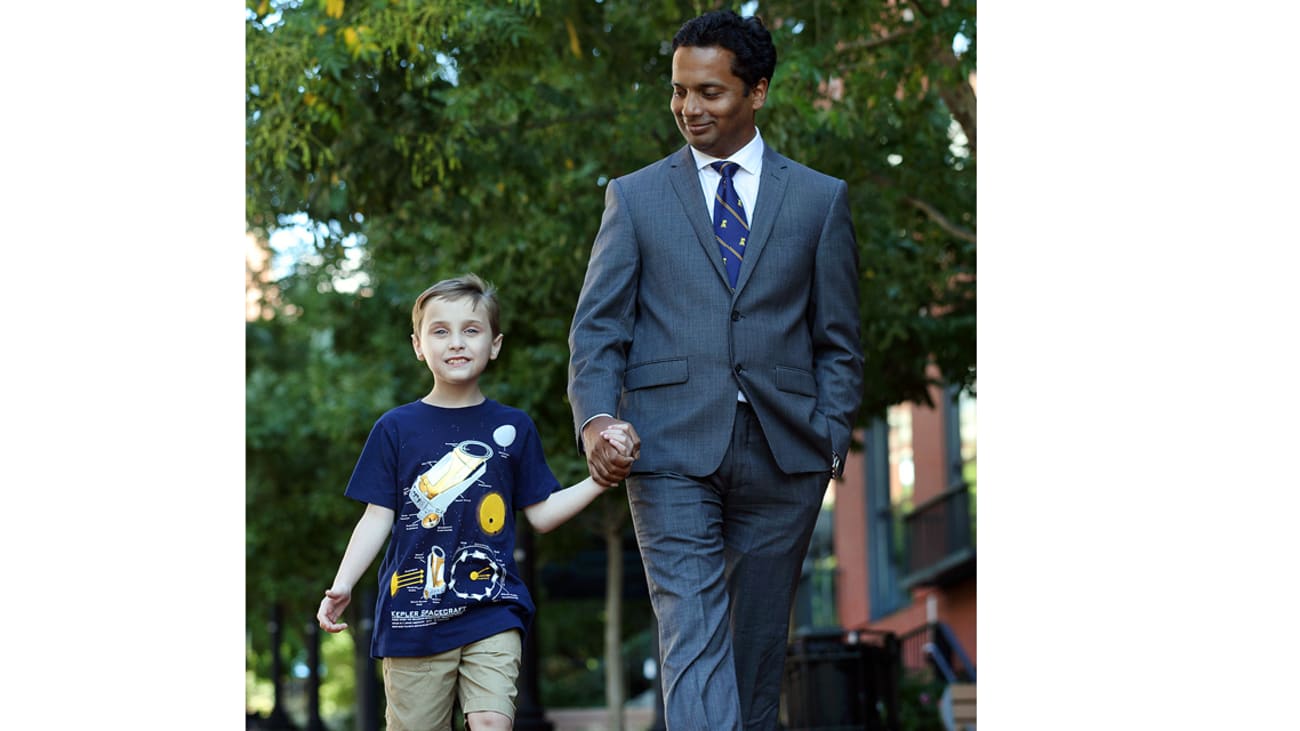

Restore
October 30, 2017
“The right procedure at the right time is critical when treating children with cerebral palsy,” says Ranjit Varghese, Johns Hopkins orthopaedic surgeon and medical director of the Ortho-Cerebral Palsy program at Kennedy Krieger Institute. Varghese understands the importance of this concept from his specialized single-event multilevel surgery (SEMLS) approach to treating children with spastic diplegia and his work with multidisciplinary programs that focuses on tone management and continuity of care of such patients from infancy through adulthood.
During early childhood, Varghese sets his patients on a trajectory for surgical success and improved quality of life by creating treatment milestones. “Most children with CP will need some kind of orthopaedic intervention, so we have a path of treatment that reduces the total number of procedures they need,” says Varghese.
Varghese believes that the management of patients with cerebral palsy must be individualized according to the child’s clinical presentation and that it requires a multidisciplinary approach. At Kennedy Krieger Institute, he is involved in a multidisciplinary spasticity management program that includes pediatric specialists from the departments of neurosurgery and physical medicine and rehabilitation.

- Ranjit Varghese
“We review ambulant children at 3 to 4 years of age who will benefit from surgery that reduces muscle tone,” explains Varghese.
Some of these children may benefit from selective dorsal rhizotomy—a neurosurgical procedure that reduces muscle tone permanently. Once the muscle tone is reduced, the child begins rehabilitation to learn to walk again. Approximately two years later, the child’s gait is analyzed to determine whether orthopaedic surgery is needed.
“As the child grows, the bones may grow in an abnormal manner. That doesn’t go away when you do selective dorsal rhizotomy, so we realign the lower extremities via SEMLS,” says Varghese. “I can do all of the lower extremity surgeries at once. Then hopefully we do not have to intervene again in the future.”
Share Fast Facts
Pediatric orthopaedic surgeon Ranjit Varghese explains the types of cerebral palsy conditions that can be treated by an orthopedic surgeon, and the benefits of sending a patient to @HopkinsKids. Click to Tweet
The goals of these early surgeries are to improve children’s quality of life as they transition through puberty and into adulthood and to preserve their ability to walk. For children who do not receive early intervention, CP can lead to many orthopaedic surgeries throughout adulthood, as well as physical therapy and rehabilitation.
Varghese and his team provide caregivers the security of knowing that their child not only has a long-term treatment plan but also a team of doctors who will see him or her through to adulthood.
“Sometimes as a parent or a referring physician, you are not sure what the individual child needs,” says Varghese, “but this system enables us to connect the child to the right specialists with the right treatments to minimize the burden on patients and families.”

